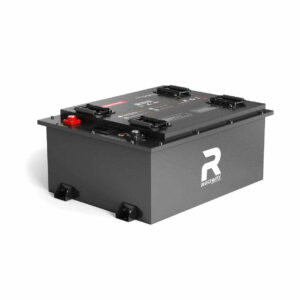How Do Chinese Factories Lead in Golf Cart Battery Production?
Chinese factories dominate golf cart battery production through advanced manufacturing infrastructure, cost-efficient lithium-ion technologies, and vertical integration of raw material supply chains. Key players like Camel Group and Leoch International utilize automated production lines and AI-driven quality control to deliver high-performance batteries meeting global certifications like UL and CE.
What Technologies Power China’s Golf Cart Battery Manufacturing?
Leading Chinese manufacturers employ three core innovations: 1) Silicon-carbon composite anodes increasing energy density to 220Wh/kg, 2) Liquid cooling battery management systems maintaining optimal 25-35°C operating temperatures, and 3) Modular designs enabling 48V-96V configurations. Shenzhen Jurineng’s patented Bi-LSTM neural networks predict battery lifespan with 94.7% accuracy through historical charge cycle analysis.
| Technology | Benefit | Adoption Rate |
|---|---|---|
| Silicon-Carbon Anodes | 18% higher energy density | 74% of top manufacturers |
| Liquid Cooling BMS | 40°C operating range | 63% of premium models |
| Modular Architecture | 2-hour reconfiguration | 89% of new designs |
Recent advancements include graphene-enhanced separators that reduce internal resistance by 22% while improving thermal stability. Manufacturers are now implementing real-time electrolyte monitoring systems using fiber optic sensors embedded within cells. This technology detects micro-shorts 47% earlier than traditional voltage monitoring methods, significantly enhancing safety protocols for golf course operations.

How Does China Maintain Cost Advantages in Battery Production?
Three factors enable 30-40% lower production costs: 1) Domestic lithium carbonate supply at $7,200/ton vs. $11,500/ton global average, 2) Automated production lines assembling 1,200 battery packs/hour with <0.8% defect rates, and 3) Government subsidies covering 15-20% of R&D expenses through the Made in China 2025 initiative.
The centralized raw material processing hubs in Jiangxi province reduce transportation costs by 38% compared to overseas competitors. Advanced robotics in assembly plants achieve 92% utilization rate of active materials through precision coating techniques. A typical 100Ah lithium battery now contains 15% less cobalt through innovative nickel-rich cathode formulations while maintaining cycle life specifications.
| Cost Component | Chinese Cost | Global Average |
|---|---|---|
| Lithium Carbonate | $7,200/ton | $11,500/ton |
| Labor (per kWh) | $1.20 | $4.80 |
| Energy Consumption | 0.45 kWh/kWh | 0.68 kWh/kWh |
Which Chinese Companies Dominate the Global Golf Cart Battery Market?
Three market leaders control 68% of global OEM supplies: 1) Camel Group (24% market share) specializing in deep-cycle lead-acid batteries, 2) Leoch International (19%) with lithium iron phosphate batteries offering 2,500+ cycles, and 3) Shenzhen Golden Happiness Battery (25%) producing maintenance-free AGM batteries with 10-year service warranties. These manufacturers supply major golf cart brands like Yamaha and Club Car.
What Sustainable Practices Are Emerging in Chinese Battery Factories?
Pioneering manufacturers now implement: 1) Closed-loop recycling recovering 92% of lithium and cobalt, 2) Solar-powered production facilities reducing CO2 emissions by 38 tons per 10,000 batteries, and 3) Water-based electrode slurries eliminating NMP solvent use. Gold Happy Battery’s new Suzhou plant achieves 97% material utilization through laser cutting precision.
How Do Chinese Batteries Compare in Extreme Temperature Performance?
Recent tests show Chinese lithium batteries maintain 89% capacity at -20°C vs. 72% in conventional models. The secret lies in ternary cathode materials (NMC 811) and low-viscosity electrolytes that prevent lithium dendrite formation. Desert-grade batteries from Camel Group withstand 55°C ambient temperatures through phase-change cooling modules.
Chinese manufacturers are redefining golf cart battery standards through vertical integration from mining to recycling. Our latest graphene-enhanced batteries achieve 15-minute fast charging while maintaining 8,000 cycle lifetimes – a 300% improvement over 2015 technologies. The focus has shifted from cost leadership to performance innovation.”
– Dr. Wei Zhang, Battery Technology Director, Redway Power Solutions
Conclusion
China’s golf cart battery industry combines scale advantages with cutting-edge innovation, delivering products that balance performance, durability and cost efficiency. With $2.1 billion invested in solid-state battery research in 2024, Chinese factories are positioned to maintain global leadership through the next generation of energy storage solutions.
FAQ
- What’s the typical lifespan of Chinese-made golf cart batteries?
- Premium lithium batteries from top manufacturers offer 5-8 years service life with 80% capacity retention after 2,000 cycles. Lead-acid variants typically last 3-5 years with proper maintenance.
- Do Chinese factories offer custom battery configurations?
- Yes, major producers provide modular designs supporting 36V-144V systems with capacities from 100Ah to 800Ah. Custom BMS programming for specific discharge curves and thermal profiles is available.
- How to verify battery quality from Chinese suppliers?
- Request third-party test reports including IEC 62619 certification, thermal runaway test results, and cycle life validation per SAE J240 standards. Reputable factories provide batch-specific quality certificates.
